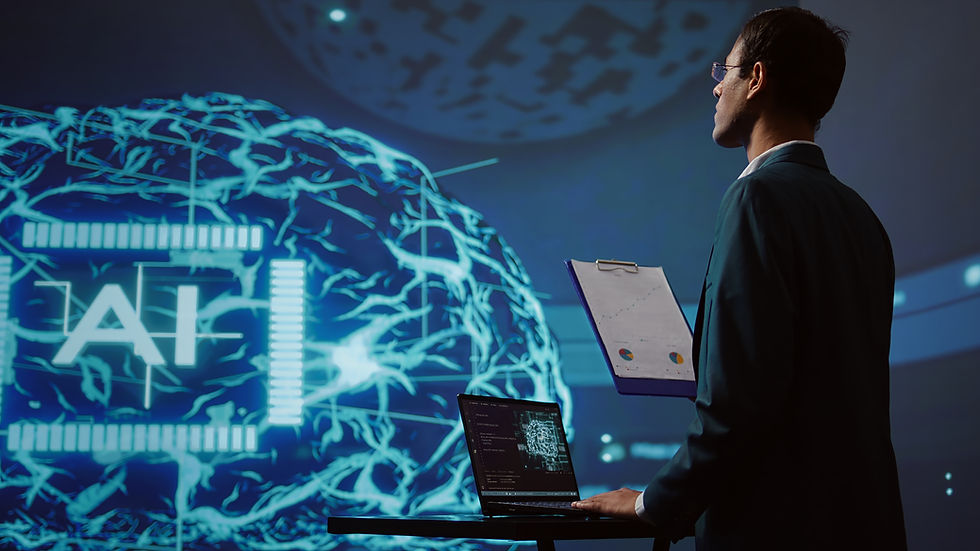In today’s fast-paced industrial landscape, maintaining high standards of quality assurance is crucial for success. One of the most groundbreaking technologies that has emerged to support this is real-time visual diagnostics. This innovation is transforming how industries approach monitoring and quality control. But what exactly does this entail, and how is it reshaping the landscape of industry QA? Let’s delve into the world of real-time visual diagnostics and explore its profound impact.

Understanding Real-Time Visual Diagnostics
Real-time visual diagnostics refers to the technology that allows for the immediate analysis and interpretation of visual data from production processes. It utilizes advanced imaging techniques to capture and analyze data as it happens, enabling swift decision-making and problem-solving.
The Technology Behind Visual Diagnostics
At the heart of real-time visual diagnostics are powerful cameras and imaging sensors. These devices capture high-resolution images and videos of production lines, which are then processed by sophisticated software algorithms. The insights obtained from this data help identify defects and inconsistencies promptly.
Applications in Various Industries
The versatility of real-time visual diagnostics means it can be applied across multiple industries, each benefiting from its unique capabilities.
Manufacturing
In manufacturing, maintaining product quality is of utmost importance. Real-time visual diagnostics allows for constant monitoring of production lines, ensuring that any defects are caught and rectified immediately. This not only improves product quality but also reduces waste and increases efficiency.
Healthcare
In the healthcare industry, precision is critical. Real-time visual diagnostics helps in the accurate monitoring of medical devices and equipment, ensuring they function correctly and safely. This technology is vital in maintaining high standards of patient care.
Agriculture
In agriculture, real-time visual diagnostics can be used to monitor crop health and growth. By analyzing visual data, farmers can make informed decisions about irrigation, pest control, and harvesting, leading to better yields and sustainable practices.
Benefits of Real-Time Visual Diagnostics
The advantages of using real-time visual diagnostics are numerous and significant.
Immediate Feedback
One of the primary benefits is the ability to receive immediate feedback. This allows for quick adjustments in the production process, minimizing downtime and improving efficiency.
Cost Efficiency
By identifying defects and issues early, companies can save on costs related to waste, rework, and recalls. This technology helps maintain a high standard of quality without incurring additional expenses.
Enhanced Safety
In industries such as manufacturing and healthcare, safety is paramount. Real-time visual diagnostics ensures that any potential safety hazards are identified and addressed promptly, protecting both workers and end-users.
Challenges and Considerations
Despite its many benefits, implementing real-time visual diagnostics comes with its own set of challenges.
Data Management
The sheer volume of data generated by real-time visual diagnostics systems requires robust data management solutions. Companies must invest in scalable storage and processing capabilities to handle this influx of information.
Integration with Existing Systems
Integrating real-time visual diagnostics into existing production systems can be complex. It requires careful planning and coordination to ensure seamless operation.
Future of Real-Time Visual Diagnostics
The future of real-time visual diagnostics looks promising, with ongoing advancements in technology and applications.
AI and Machine Learning
As artificial intelligence (AI) and machine learning continue to evolve, their integration with real-time visual diagnostics is expected to enhance its capabilities further. These technologies will enable more accurate predictions and deeper insights from visual data.
Expanding Applications
As industries continue to recognize the value of real-time visual diagnostics, its applications will expand beyond traditional sectors, reaching areas such as retail and logistics, where real-time monitoring can offer significant advantages.
Conclusion
Real-time visual diagnostics is undeniably a game-changer in the realm of industry QA. Its ability to provide immediate insights and enhance quality control processes is invaluable. As technology continues to advance, the impact of real-time visual diagnostics on various industries will only grow, paving the way for a future where precision and efficiency are the norms.

FAQs
What is real-time visual diagnostics?
Real-time visual diagnostics is a technology that allows for the immediate analysis and interpretation of visual data from production processes, enabling swift decision-making and problem-solving.
How does real-time visual diagnostics benefit industries?
It provides immediate feedback, improves cost efficiency, and enhances safety by identifying defects and safety hazards promptly.
What challenges do companies face with real-time visual diagnostics?
Challenges include managing the large volume of data generated and integrating the technology with existing production systems.
For more information on stroboscopic systems, visit Monarch Instrument.
Explore more on timing verification in automated lines and understand how it complements real-time visual diagnostics.
This article contains affiliate links. We may earn a commission at no extra cost to you.
